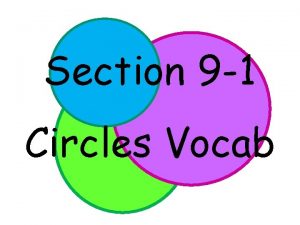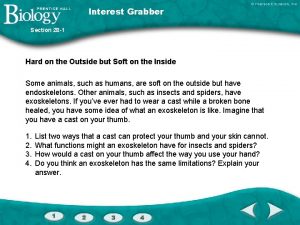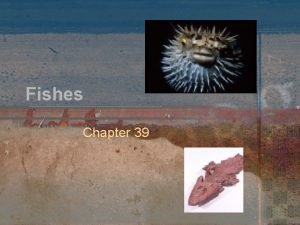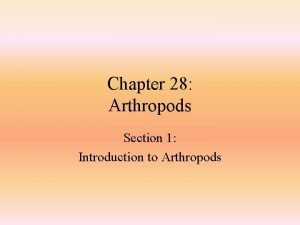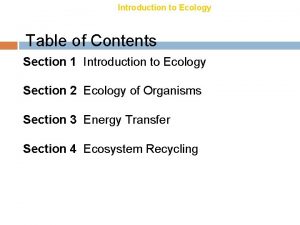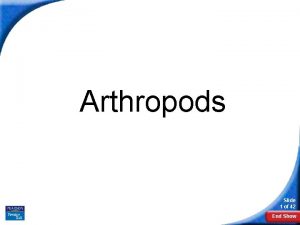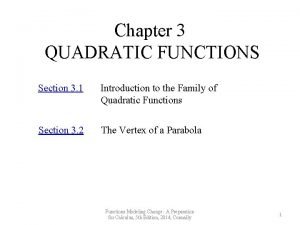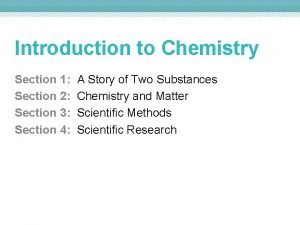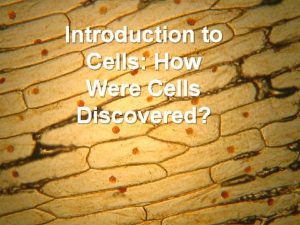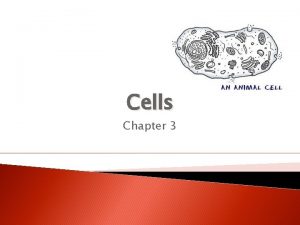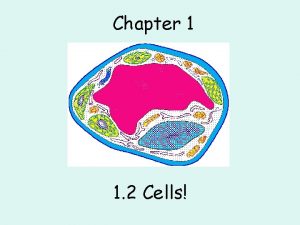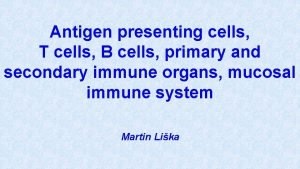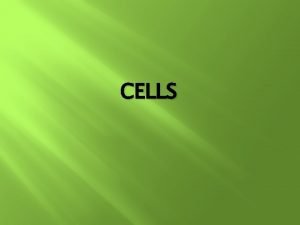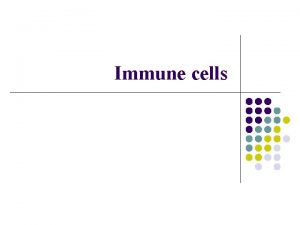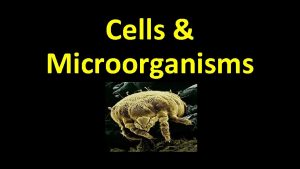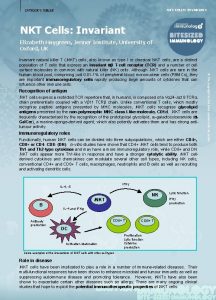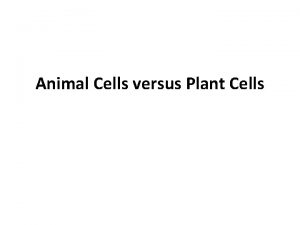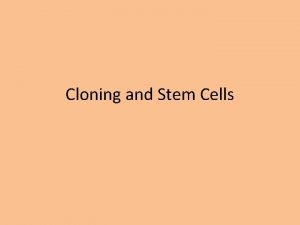Cells Section 1 An Introduction to Cells Section






























- Slides: 30

Cells Section 1: An Introduction to Cells Section 2: Plasma Membrane Section 3: Organelles & Cytoskeleton

An Introduction to Cells The smallest living unit in the human body • Building blocks of all plants and animals • New cells come from pre-existing cells • Smallest units that perform all vital functions

An Introduction to Cells All cells are descendents of the fertilized ovum Differentiation: The process of gradual cellular specialization

Major Cellular Components Extracellular fluid Plasma Membrane Cytoplasm Cytosol Organelles Nonmembranous • Cytoskeleton • Microvilli • Centrioles • Cilia • Ribosomes Membranous • Mitochondria • Endoplasmic Reticulum • Golgi Apparatus • Lysosomes • Peroxisomes • Nucleus

Plasma Membrane Physical barrier separating the inside of the cell from the surrounding extracellular fluid Figure 3. 32 1

Plasma Membrane Selectively permeable phospholipid bilayer Hydrophilic heads Hydrophobic tails Cholesterol Figure 3. 2 1 -2

Phospholipids Phosphate Head (Hydrophilic) Fatty Acid Tail (Hydrophobic )

Phospholipid Bilayer • Fluid (like oil) • Hydrophobic molecules can get through easily, while hydrophilic molecules can’t

Fluid-Mosaic Model • Cell membrane is sea of phospholipids with a mosaic of proteins moving within it

Membrane Proteins Integral Proteins Peripheral Proteins

Membrane Protein Functions • • • Anchoring - stabilize position Recognition - identifiers Enzymes - catalyze reactions Receptors - sensitive to ligands Carriers - bind and transport Channels - passageways

Cholesterol • Patching material – Keep small molecules from sneaking through • Fluidity – Keeps membrane fluid across a range of temperatures

Glycocalyx (glycoproteins & glycolipids) • • Cell Recognition Lubrication Anchoring Binding Sites

Major Cellular Components Extracellular fluid Plasma Membrane Cytoplasm Cytosol Organelles Nonmembranous • Cytoskeleton • Microvilli • Centrioles • Cilia • Ribosomes Membranous • Mitochondria • Endoplasmic Reticulum • Golgi Apparatus • Lysosomes • Peroxisomes • Nucleus

Cell Organelles Microvilli Golgi apparatus Mitochondria Lysosomes Peroxisomes Centrioles Nucleus Endoplasmic reticulum -rough -smooth Ribosomes -Bound -Free Cytoskeleton Figure 3. 1 1

Cell Organelles • Ribosomes Bound or fixed Protein synthesis • Lysosomes Vesicles containing digestive enzymes Removal of damaged cellular material • Peroxisomes Vesicles containing degradative enzymes (H 2 O 2) Catabolism of fat and organic compounds; neutralize toxins

Cell Organelles • Mitochondria Double membrane enclosing metabolic enzymes Produces ATP (95%) • Endoplasmic Reticulum (ER) Membranous network extending through cytoplasm Intracellular storage and transport; secretory products • Smooth ER – lipid synthesis • Rough ER – protein synthesis • Golgi Apparatus Stacks of flattened membranes containing chambers Storage, packaging, processing of synthesized products

Mitochondria Organelles responsible for energy production; ATP Double Membrane Matrix Cristae Figure 3. 6 1

Rough Endoplasmic Reticulum Network of intracellular membranes connected to the nuclear envelope Rough ER Fixed Ribosomes Figure 3. 4 2 -3

Rough Endoplasmic Reticulum The site where newly synthesized proteins are chemically modified and packaged for export Figure 3. 4 4

The Golgi Apparatus A cellular organelle containing membranous stacks that package and sort secretory vesicles 1) Membrane renewal 2) Secretion 3) Lysosome 1 2 3 Maturing face Forming face Transport vesicle Figure 3. 5 1

Cytoskeleton Maintains shape of cell and aids in cell movements • • Filaments Microtubules Cilia Flagella

Cells Section 4: Structure and Function of the Nucleus Section 5: Protein Synthesis

The Nucleus A control center for cellular processes Nuclear envelope Nuclear pores Chromatin Nucleolus Figure 3. 7 1

The Nucleus Nuclear DNA stores instructions for protein synthesis Nucleosomes Chromatin Histones DNA double helix Figure 3. 7 2

Protein Synthesis, Processing, & Packaging protein lysosome ribosome DNA m. RNA Nucleus RER Golgi

Microscopes Section 6: Microscopes

Microscope

The Cell Nucleus containing DNA Endoplasmic reticulum Lysosome mitochondria Golgi Apparatus

Frog Skin Cells Nucleus cytoplasm Plasma membrane
 Paranasal sinuses development
Paranasal sinuses development Transport maximum
Transport maximum Pineal gland
Pineal gland How are mitosis and meiosis similar
How are mitosis and meiosis similar Somatic vs germ cells
Somatic vs germ cells Red blood cells and white blood cells difference
Red blood cells and white blood cells difference Prokaryotic cells vs eukaryotic cells
Prokaryotic cells vs eukaryotic cells Venn diagram animal and plant cells
Venn diagram animal and plant cells Prokaryotic cells
Prokaryotic cells Why did robert hooke name cells “cells”?
Why did robert hooke name cells “cells”? Masses of cells form and steal nutrients from healthy cells
Masses of cells form and steal nutrients from healthy cells Label
Label What cell type
What cell type Prokaryotic cells
Prokaryotic cells Nondisjunction in meiosis
Nondisjunction in meiosis Cell substance
Cell substance Essay structure
Essay structure Circle vocab geometry
Circle vocab geometry 26-1 introduction to the animal kingdom
26-1 introduction to the animal kingdom Section 22-1 introduction to plants
Section 22-1 introduction to plants 32-1 introduction to mammals answer key
32-1 introduction to mammals answer key Section 28-1 introduction to the arthropods answer key
Section 28-1 introduction to the arthropods answer key Section 39-1 review introduction to vertebrates
Section 39-1 review introduction to vertebrates Introduction of arthropods
Introduction of arthropods Chapter 19 protists worksheet answers
Chapter 19 protists worksheet answers Section 18-1 introduction to ecology worksheet answers
Section 18-1 introduction to ecology worksheet answers Section 28-1 introduction to the arthropods
Section 28-1 introduction to the arthropods Calculus 3
Calculus 3 The study of life section 1 introduction to biology
The study of life section 1 introduction to biology Section 1 introduction to geometry answers
Section 1 introduction to geometry answers Introduction to chemistry section 3 scientific methods
Introduction to chemistry section 3 scientific methods

















